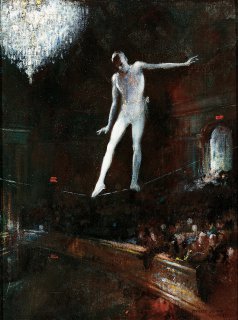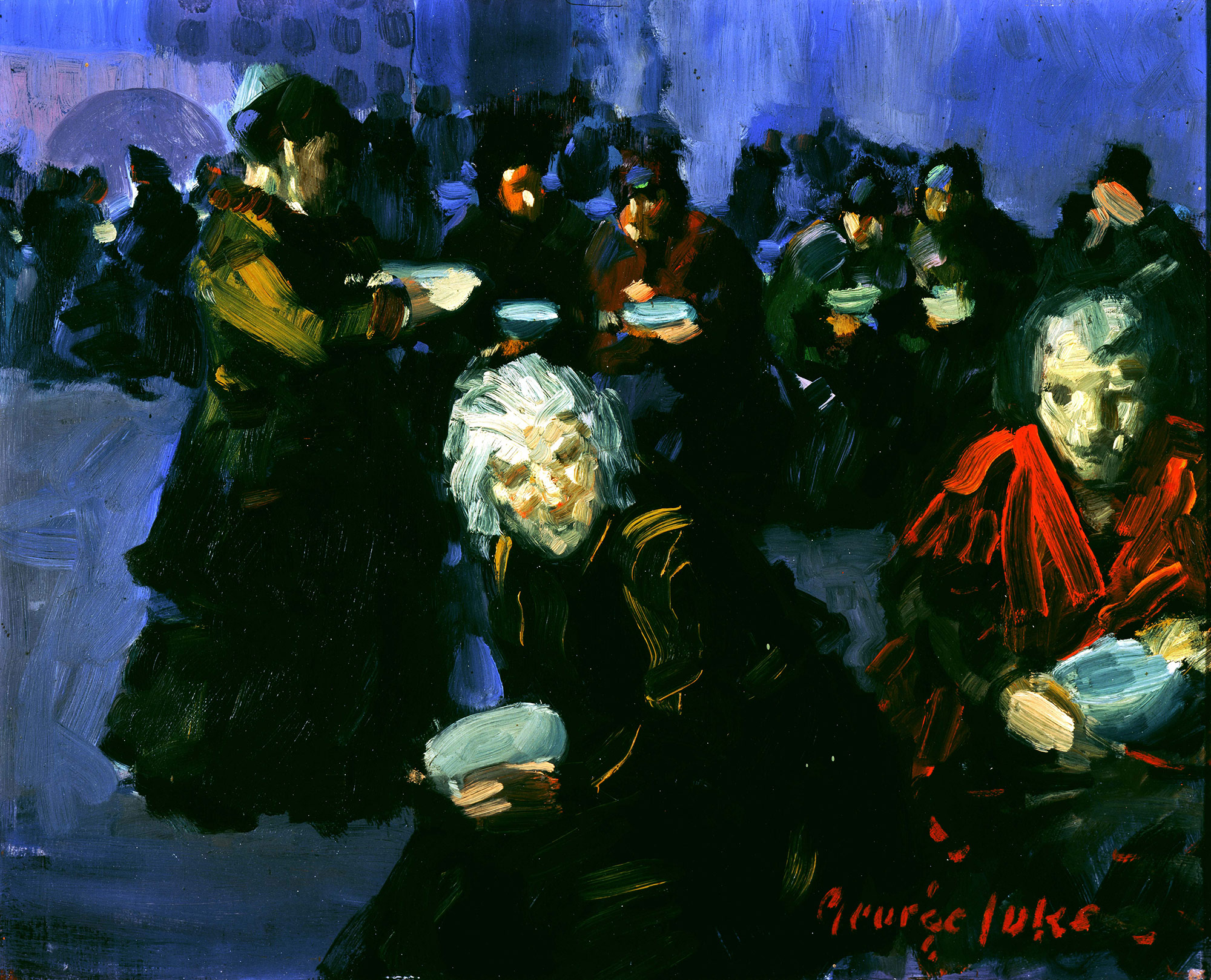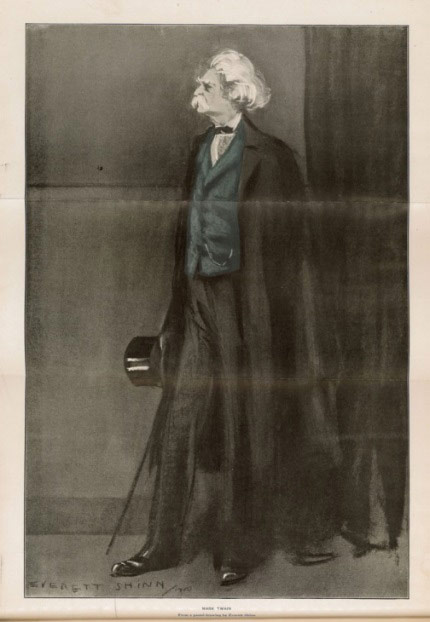
Everett Shinn
Tightrope Walker
(1876–1953)
American 1924 Oil on canvas 23 ½ x 18 inches Museum purchase with funds provided by the James F. Dicke Family and the E. Jeanette Myers Fund 1998.7
Street Life and Theater Lights
Light and dark, grit and glitter are some of the elements that populate this and other works by Everett Shinn. From the hardships of the poor to the recreation of the rich, this artist spent his career exploring the many complexities of urban society.
A Day in the Life
Tools and Techniques
Behind the Scenes
Look Closer
Brought to Light
As a teenager Everett Shinn briefly worked as a gas lighting designer. Although he was fired for doodling the people and streets of Philadelphia on his drafts, this was one of the places where Shinn’s lifelong fascination with illumination began. Electric street lamps, gas stage lights, the natural radiance of the sun, stars, and moon–all were treated carefully by the artist, who from the early 20th century also captured the interplay between disparate light sources in his works. In Tightrope Walker, Shinn even seems to have depicted the red glow of electric EXIT signs, a new feature in public buildings at the time. Take a closer look and answer the question below.
Poll
Other than the exit indicators, how many sources of illumination (direct and indirect) do you think Shinn has depicted?
Just for Kids
Signs & Symbols
Dig Deeper
A Student of the City
Everett Shinn was one of the original members of the Ashcan School, a group of New York artists known for their interest in capturing authentic urban existence. They particularly focused on the lower class and bleaker aspects of city life, as seen in Ashcan artist George Luks’ The Breadline, located in Gallery 204. Most art institutions at the time found this subject matter distasteful, and ridiculed the school’s loose, sketchy style of rendering, which was, to the Ashcan School, another means of achieving authenticity.
With this information in mind, Everett Shinn’s theater scenes may seem at odds with his portrayals of the urban poor. Yet, his works are unified by their brushwork and composition, which typically convey immediacy–a sense of nearness to the viewer in both time and space.

George Luks (American, 1867–1933), The Breadline, 1905–1925, oil on panel, 17 x 21 inches. Museum purchase with funds provided by the James F. Dicke Family, 1997.18.
Arts Intersected
Promises, Promises
In 1900, The Critic magazine asked Everett Shinn to produce a portrait of Samuel Langhorne Clemens (Mark Twain) for publication, seen below. Shinn’s final drawing portrayed Clemens with an uncharacteristically elongated body. Though the author was fond of the work, Shinn asked if he could paint another portrait, this time having Mr. Clemens model for him.
During the sitting, Shinn vowed to purchase Clemens's entire collected works, providing the author signed them. Clemens happily countered that if the artist did buy every volume, he would write an original short story on the inside cover of each book. Unfortunately for Mark Twain enthusiasts, Shinn did not follow through with his purchasing plans, and the author never wrote the promised stories.

Everett Shinn, Portrait of Mark Twain, The Critic, March, 1900 (artwork in the public domain; photograph provided by Special Collections and Archives, Furman University).
The Sculpture Speaks
Did You Know?
Expert Opinion
Look Around
About the Artist
Always Making a Scene
Everett Shinn was a lifelong performer and maker. As a child he excelled at acrobatics and art, and throughout his career he combined these interests, rendering the beauty and drama of stage performance in works like Tightrope Walker. Furthermore, in addition to generating a large body of paintings and pastels depicting the people and activities of the city, he also designed theater sets and costumes; wrote, directed, and performed in plays; and served as an art director for several motion pictures, including Polly of the Circus, the first film produced by Goldwyn Pictures
Talk Back
Like It or Not?
Although in his youth Shinn himself did not conform to the prevailing artistic standards, later in life he heavily criticized modern artists like Picasso, claiming that their work was not true “art.”
Are there any styles or movements in art that you have difficulty appreciating? Why?

